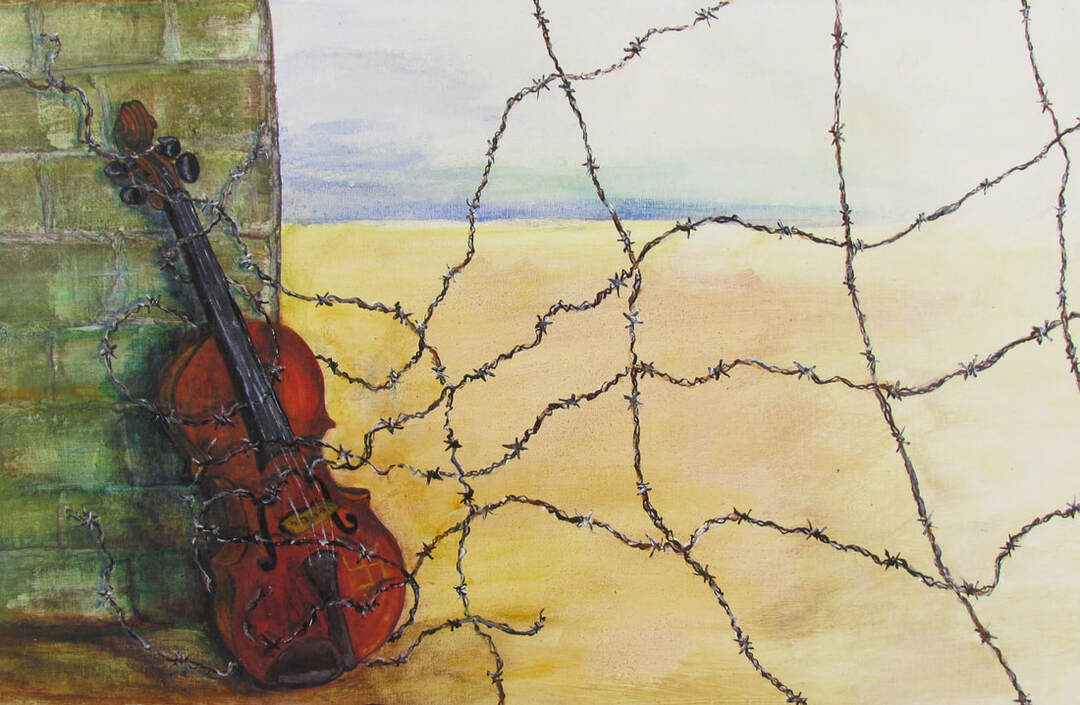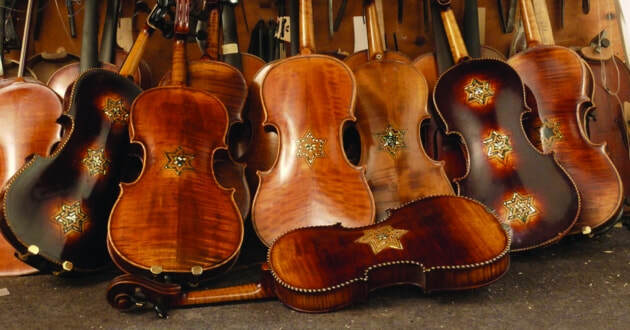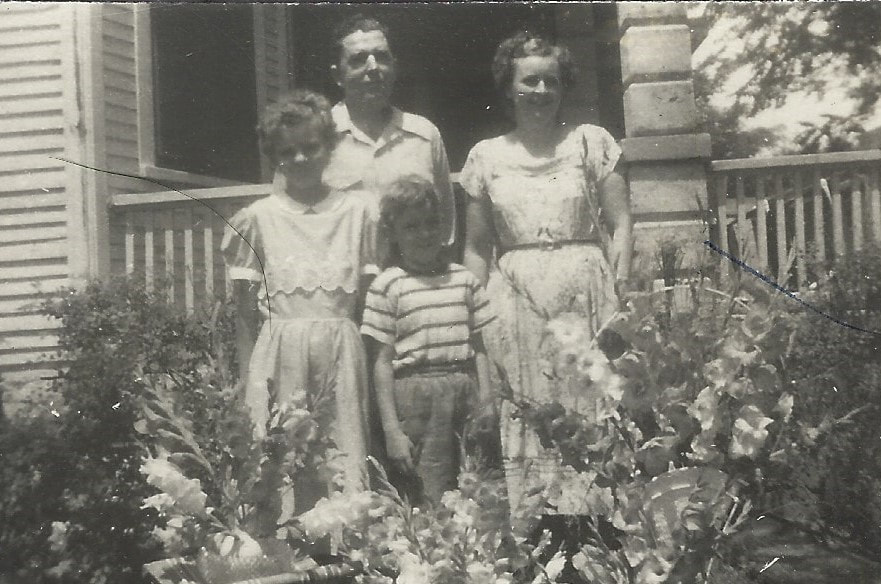- Published on
The Defiance before Liberation
Theresienstadt
May 8, 1945
All of history intrigues me. History that also encompasses art and music particularly fascinates me. One such time and place is World War II in the Czech Republic where a former holiday resort for the nobility became a concentration camp for Jews from the northeastern countries of Europe who were captured by the Nazis. This is a camp that held over 150,000 captives of which 15,000 were children. This was also the camp where music became a tool of group defiance, personal dignity, and self-liberation.
Theresienstadt, also known as Terezin was advertised to the world as a “model” alternate society for the “resettled” Jews. On official visits from the International Red Cross, it was just that. Children laughed and played on shiny new playground equipment. Everyone had plenty to eat, clean clothes, and happy dispositions. However, once the delegation departed, the facades fell away, and the ruse gave way to reality.
The camp was indeed a concentration camp with all of the associated horrors. Not only did the Nazis torture their prisoners physically, they also tortured them mentally often utilizing music as a weapon. Music was played through loudspeakers in the camp in order to “re-educate” and demoralize the prisoners. Nazi officers required inmates to sing on demand for their amusement. Prisoners were forced to “entertain” the Nazis in the evenings for their listening pleasure. And if the singing was not performed to perfection, the prisoners would be beaten.
Survivor Eberhard Schmidt reported that,
“Anyone who did not know the song was beaten. Anyone who sang too
softly was beaten. Anyone who sang too loud was beaten. The SS men lashed
out wildly.” (Fackler, p. 1)
Another survivor, Karl Röder, recalls that singing songs on command was part of the
daily routine of camp life: “We sang in small groups, or one block would sing, or several
thousand prisoners all at once. After several hours singing, we were often unable to
produce another note”. (Fackler p. 1)
Daily tasks, prisoner floggings and even grizzly executions were staged to music. Music which is meant to enlighten the mind and inspire the soul was degraded to become a tool of intimidation.
However, at Theresienstadt, as in all camps, there were a large number of highly educated Jewish men and women within the walls. These intellectuals were determined to use their training and mental acuity to defy their captors and take control of the message in the music as well as their state of mind. One such prisoner was Czech composer Rafael Schächter. He along with 150 other Jews performed Giuseppe Verdi’s Requiem for the Nazi SS. This complex piece of music was memorized by rote repetition from the single available vocal score and performed alongside a pitiful upright piano. Surviving participants of this 150 voice choir reported that their purpose in performing the Requiem was defiance. The were determined to sing to their captors those words which could not be spoken, the words that meant you can take our bodies, but you cannot have our minds and souls.
Paul King, a violinist in Theresienstadt and a Holocaust survivor stated that,
“There was no happiness. It was survival…Culture is very often
a survival mechanism for nations, as it is for smaller groups… Because, after all,
everybody felt that there is perhaps more chance in surviving if you are unified at
least in spirit if not in anything else… “ (Wadler)
This monumental achievement by innocent people, criminalized only by their race, will forever stand as a testament to the strength of the human spirit. To commemorate their lives and carry on their legacy, a group of musicians travels the world performing Verdi’s Requiem using restored violins previously owned and played by the prisoners within the camps.
Viktor Frankl, a renowned psychiatrist and Theresienstadt survivor reminds us that “everything can be taken from a man but one thing: the last of the human freedoms — to choose one’s attitude in any given set of circumstances, to choose one’s own way.”
In commemoration of these brave souls who chose to exercise their final freedom in an act of musical defiance, I dedicate this painting. Should we ever forget their suffering, we do them an even greater injustice than has already been done. Instead, let us remember: remember their remarkable lives, their intrinsic value, their indomitable spirit, their all-encompassing hope expressed through the music they performed in the midst of their horror.
WORKS CITED:
Cook, Michael, et al. “7 Astonishing Quotes From Auschwitz Survivor Viktor Frankl.” The Stream, 8 May
2016, stream.org/7-astonishing-quotes-from-auschwitz-survivor-viktor-frankl/.
Fackler, and Guido. “Music in Concentration Camps 1933-1945.” Music and Politics,
Michigan Publishing, University of Michigan Library, 1 June 2007,
quod.lib.umich.edu/m/mp/9460447.0001.102/--music-in-concentration-camps-1933-1945?rgn=main;view.
ORT, World. “Music and the Holocaust.” Music and the Holocaust: Kling, Paul, 7 May 2020,
holocaustmusic.ort.org/places/theresienstadt/paul-kling/.
Rose, Julie. “'Violins Of Hope': Instruments From The Holocaust.” NPR, NPR, 15 Apr. 2012,
www.npr.org/2012/04/15/150645417/violins-of-hope-instruments-from-the-holocaust.
“The History of Terezin - Terezin - Children of the Holocaust.” Terezin, 8 May 2020,
www.terezin.org/the-history-of-terezin.
Theresienstadt
May 8, 1945
All of history intrigues me. History that also encompasses art and music particularly fascinates me. One such time and place is World War II in the Czech Republic where a former holiday resort for the nobility became a concentration camp for Jews from the northeastern countries of Europe who were captured by the Nazis. This is a camp that held over 150,000 captives of which 15,000 were children. This was also the camp where music became a tool of group defiance, personal dignity, and self-liberation.
Theresienstadt, also known as Terezin was advertised to the world as a “model” alternate society for the “resettled” Jews. On official visits from the International Red Cross, it was just that. Children laughed and played on shiny new playground equipment. Everyone had plenty to eat, clean clothes, and happy dispositions. However, once the delegation departed, the facades fell away, and the ruse gave way to reality.
The camp was indeed a concentration camp with all of the associated horrors. Not only did the Nazis torture their prisoners physically, they also tortured them mentally often utilizing music as a weapon. Music was played through loudspeakers in the camp in order to “re-educate” and demoralize the prisoners. Nazi officers required inmates to sing on demand for their amusement. Prisoners were forced to “entertain” the Nazis in the evenings for their listening pleasure. And if the singing was not performed to perfection, the prisoners would be beaten.
Survivor Eberhard Schmidt reported that,
“Anyone who did not know the song was beaten. Anyone who sang too
softly was beaten. Anyone who sang too loud was beaten. The SS men lashed
out wildly.” (Fackler, p. 1)
Another survivor, Karl Röder, recalls that singing songs on command was part of the
daily routine of camp life: “We sang in small groups, or one block would sing, or several
thousand prisoners all at once. After several hours singing, we were often unable to
produce another note”. (Fackler p. 1)
Daily tasks, prisoner floggings and even grizzly executions were staged to music. Music which is meant to enlighten the mind and inspire the soul was degraded to become a tool of intimidation.
However, at Theresienstadt, as in all camps, there were a large number of highly educated Jewish men and women within the walls. These intellectuals were determined to use their training and mental acuity to defy their captors and take control of the message in the music as well as their state of mind. One such prisoner was Czech composer Rafael Schächter. He along with 150 other Jews performed Giuseppe Verdi’s Requiem for the Nazi SS. This complex piece of music was memorized by rote repetition from the single available vocal score and performed alongside a pitiful upright piano. Surviving participants of this 150 voice choir reported that their purpose in performing the Requiem was defiance. The were determined to sing to their captors those words which could not be spoken, the words that meant you can take our bodies, but you cannot have our minds and souls.
Paul King, a violinist in Theresienstadt and a Holocaust survivor stated that,
“There was no happiness. It was survival…Culture is very often
a survival mechanism for nations, as it is for smaller groups… Because, after all,
everybody felt that there is perhaps more chance in surviving if you are unified at
least in spirit if not in anything else… “ (Wadler)
This monumental achievement by innocent people, criminalized only by their race, will forever stand as a testament to the strength of the human spirit. To commemorate their lives and carry on their legacy, a group of musicians travels the world performing Verdi’s Requiem using restored violins previously owned and played by the prisoners within the camps.
Viktor Frankl, a renowned psychiatrist and Theresienstadt survivor reminds us that “everything can be taken from a man but one thing: the last of the human freedoms — to choose one’s attitude in any given set of circumstances, to choose one’s own way.”
In commemoration of these brave souls who chose to exercise their final freedom in an act of musical defiance, I dedicate this painting. Should we ever forget their suffering, we do them an even greater injustice than has already been done. Instead, let us remember: remember their remarkable lives, their intrinsic value, their indomitable spirit, their all-encompassing hope expressed through the music they performed in the midst of their horror.
WORKS CITED:
Cook, Michael, et al. “7 Astonishing Quotes From Auschwitz Survivor Viktor Frankl.” The Stream, 8 May
2016, stream.org/7-astonishing-quotes-from-auschwitz-survivor-viktor-frankl/.
Fackler, and Guido. “Music in Concentration Camps 1933-1945.” Music and Politics,
Michigan Publishing, University of Michigan Library, 1 June 2007,
quod.lib.umich.edu/m/mp/9460447.0001.102/--music-in-concentration-camps-1933-1945?rgn=main;view.
ORT, World. “Music and the Holocaust.” Music and the Holocaust: Kling, Paul, 7 May 2020,
holocaustmusic.ort.org/places/theresienstadt/paul-kling/.
Rose, Julie. “'Violins Of Hope': Instruments From The Holocaust.” NPR, NPR, 15 Apr. 2012,
www.npr.org/2012/04/15/150645417/violins-of-hope-instruments-from-the-holocaust.
“The History of Terezin - Terezin - Children of the Holocaust.” Terezin, 8 May 2020,
www.terezin.org/the-history-of-terezin.





